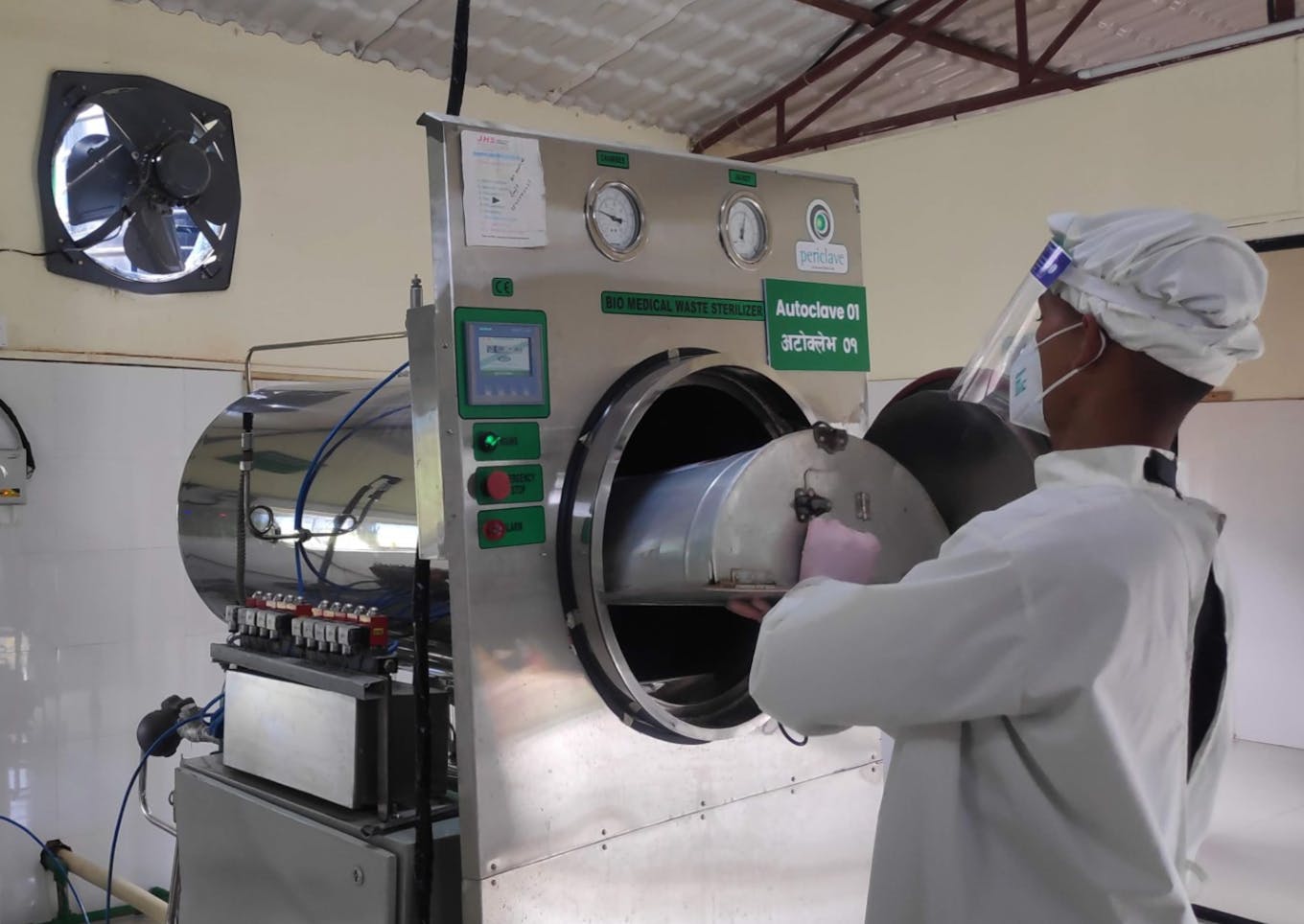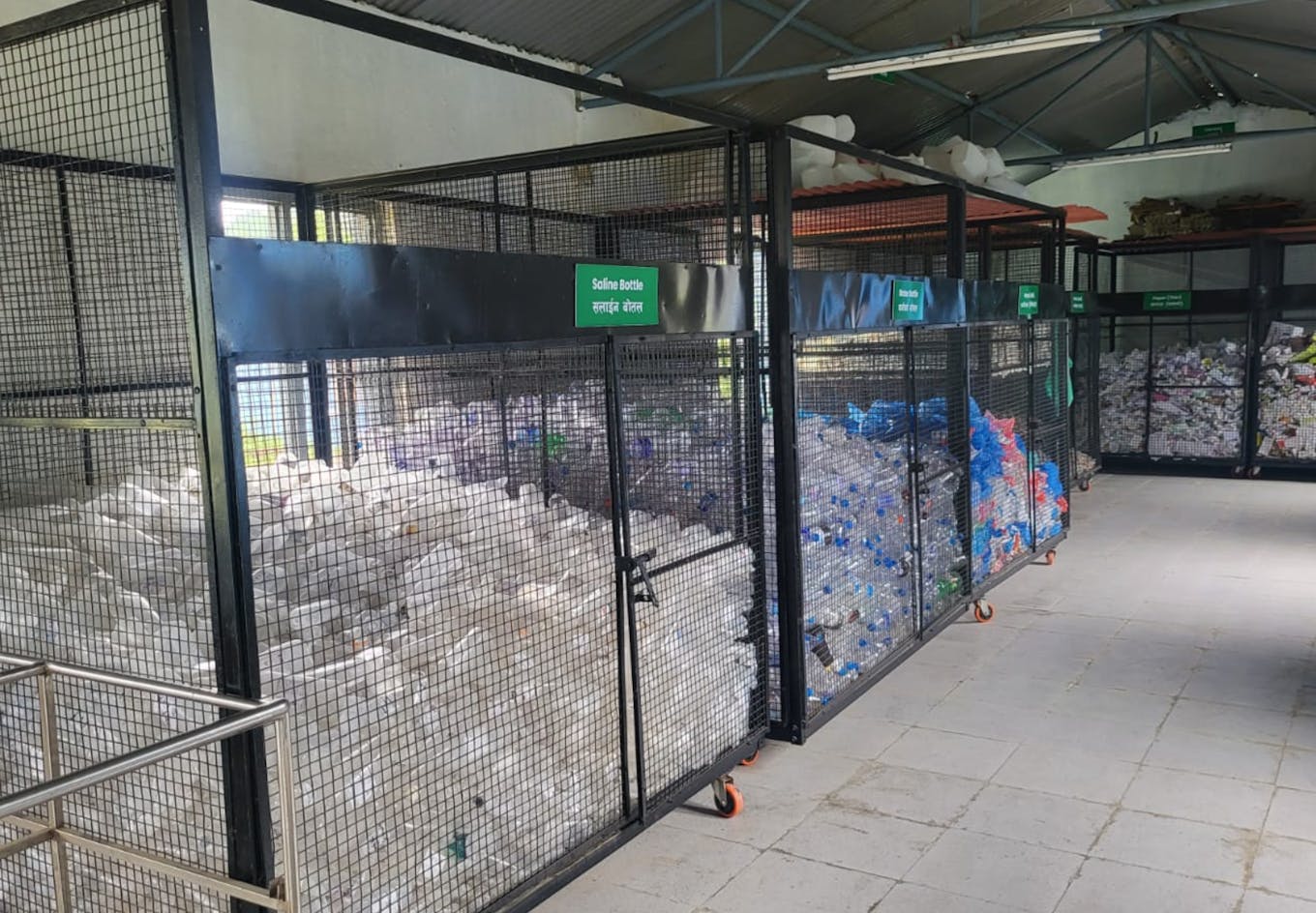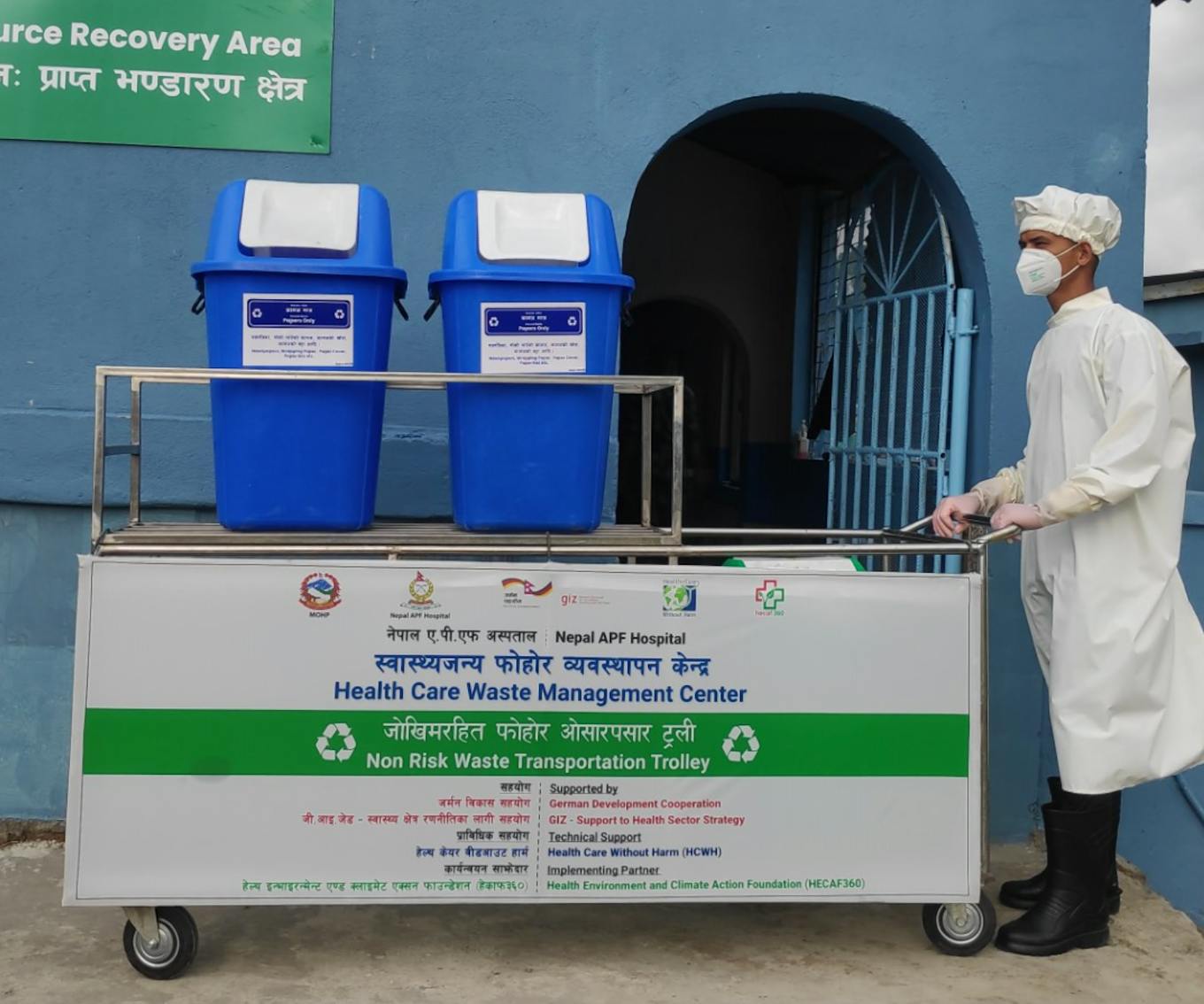Hospitals mostly dispose of waste by burning it – the tried and trusted solution. But medical waste should be recycled, said Nepali engineer and social entrepreneur Mahesh Nakarmi, who has campaigned for hospitals in the South Asian country to repurpose everything from used syringes to sanitary pads and even amputated limbs since the late 1990s.
To continue reading, subscribe to Eco‑Business.
There's something for everyone. We offer a range of subscription plans.
- Access our stories and receive our Insights Weekly newsletter with the free EB Member plan.
- Unlock unlimited access to our content and archive with EB Circle.
- Publish your content with EB Premium.
The most difficult thing about recycling hospital waste is not the technical, procedural or financial obstacles of doing so. It is the attitudes to waste among busy doctors and nurses, said Nakarmi said, whose idea for a circular economy for hospitals has taken more than a decade to bed in to Nepal’s healthcare system. “Waste management is not about recycling. It’s behaviour change,” he said.
The medical industry generates huge amounts of hazardous waste, and contributes to four per cent of global carbon emissions – higher than in shipping or aviation. In Nepal, healthcare institutions generate up to two kilogrammes of waste per hospital bed, per day.
Nakarmi founded the Kathmandu-based non-profit Health Environment Climate Action Foundation (HECAF360) in the mid-1990s, working out of a dialysis centre. He had noticed that medical waste from the dialysis centre, which included blood and urea, was being mixed in with municipal waste, which posed a serious contamination risk to the people handling the waste.
Nakarmi suggested to the hospital board that the centre should be closed down until a solution was found. “You are the engineer, so find a solution,” he recalled being told by the board.
Most countries, even now, burn medical waste. But Nakarmi was against it. “Burning is not a sustainable solution,” he said. His idea was to use an autoclave, a machine that steam-blasts medical equipment to kill harmful bacteria, to disinfect the waste glass, plastic and metals before sending it to scrap dealers for recycling. However, after sourcing a donated autoclave – the first autoclave in Nepal to be used for medical waste – from the United States Agency for International Development (USAID), Nakarmi was met with resistance from some doctors.
“They were not happy with me. They said an autoclave should not be used for waste, it should only be used for medical equipment.”
However, after a visit from a World Health Organisation (WHO) official from the Netherlands in 2007, Nakarmi found himself presenting his concept at the WHO headquarters in Geneva. He was encouraged to export his solution beyond Nepal, and elsewhere in South Asia. But getting traction for his concept has not been easy.
“It took me three years to get one project off the ground, because no one was convinced it could be done in Nepal,” he said. It wasn’t until 2010 that Nakarmi landed a project, with the Bir Hospital in Kathmandu. Since then, Nakarmi has been approached by other hospitals around the country to trial his concept, which he has developed for other kinds of waste.
He has also introduced anaerobic digesters to convert biological, pathological and food waste into methane gas that could be used as cooking fuel. His innovations not only earn an additional revenue stream for the hospitals he works with, but help to raise their profile. “Hospitals that burn their waste face a risk to their reputation,” he said, pointing to the health impacts of smouldering medical waste.
In this interview published ahead of World Health Day, the 2023 Sustainability Leadership A-List winner talks about why all types of hospital waste should be recycled and the obstacles blocking the circular economy for healthcare.
Tell us how big of a problem healthcare waste is in Nepal.
There is a big problem with mishandled medical waste leading to infections. WHO estimates that 300,000 people die in India as a result of dirty syringes annually, as many used syringes find their way onto the black market. Across the world, 1.3 million people die from using dirty needles.

A hospital worker places medical waste inside an autoclave, which is used to disinfect it. Image: HECAF360
How difficult has it been to integrate your methods into traditional healthcare systems that are often resistant to change?
It is really difficult to change behaviour in hospitals. Nurses and doctors don’t have the time to manage waste. But it doesn’t take long to cut a used syringe needle, which are made of highly recyclable stainless steel. We lined up a group of nurses, gave them a syringe and timed how long it took them to cut the needle using a cutting machine. It took them two seconds. But it did take a training programme to change their mindset and convince them that it was worth their time.
Is there any type of medical waste that you cannot recycle?
Just 10 to 15 per cent of the waste we manage is sent to landfill, the rest is recycled. The better hospital staff are at segregating the waste, the less is sent to landfill. We try to go to patients’ bedsides and separate the waste at source, because if it is mixed it becomes expensive to salvage contaminated recyclables.
We have developed a biodigester that can process pathological waste – body parts, for instance amputated legs and even aborted babies below the age of three months. We convert it into cooking gas, in the same way that food waste is processed. Food waste makes up 50 to 60 per cent of the waste we manage in a hospital.
We have also been working on a programme that involves earthworms eating soiled bandages and used sanitary pads, converting what they ingest into a non-toxic residue. But we have found through our research that menstrual sanitary pads contain toxic chemicals, so cannot be processed [a December study by George Mason University found endocrine-disrupting chemicals that can interfere with human hormones and cause medical issues in sanitary products]. We found that the earthworms in our projects would not ingest the sanitary pads because of the toxic chemicals in them. This is an issue that no one is talking about.
Cotton medical tapes and gauze are compostable, although hospitals rarely have the space to do composting.
What is the most difficult type of medical waste to recycle?
The easiest material to recycle is the harder plastics. But it’s not so much the material the object is made from, it is collecting enough of it to achieve scale and storing it, which is difficult to do in a hospital environment.

A storage facility for different kinds of plastics used in a hospital in Nepal. Image: HECAF360H
Who are the offtakers of the stuff you recycle?
Recycling is in its infancy in Nepal. But we do recycle some of it locally. Some is shipped to India. We only deal with scrap dealers we know. We show them how we disinfect the material in the autoclave and how to use the system. We make sure that there is no blood on the material they take. We also have to be careful that the autoclave doesn’t melt the material.
The plastic is hospitals tends to be of high quality, so there is always demand for it. But one problem is that the manufacturers do not print the type of plastic on the side of items. It would be a lot easier for recyclers if they knew what combination of plastic item such as blood bags were made from.
Did you experience problems during the Covid-19 pandemic to keep your programmes going, because of the heightened sensitivity around contamination and waste?
No. We used the same system to manage vaccination waste during Covid-19. We are also now working on a system to help drug users to recycle their used syringes. After they have consumed the drugs, they bring back the needle to use and we provide them with a new one.

A waste transportation unit at a hospital in Nepal. Image: HECAF360H
What’s your plan in the future?
Our model can be deployed anywhere in the world, and adapted to the local situation. Right now we are working with the government of Laos and WHO to introduce a system there. We already have a very well already defined system. Implementing the system is not difficult. But changing mindsets is key.
Mahesh Nakarmi was one of 10 sustainability leaders selected for the Eco-Business A-List 2023.














